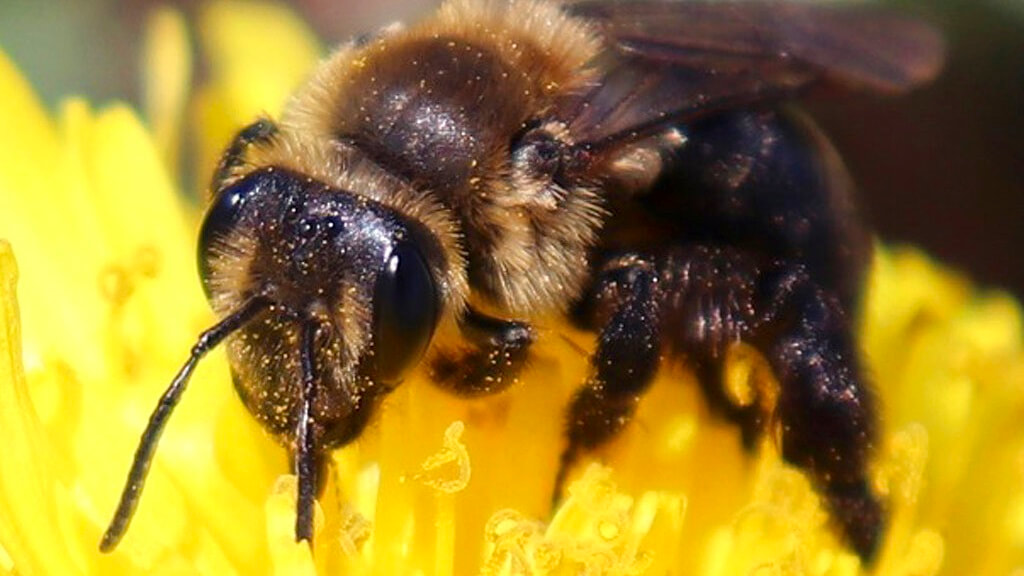|
They're small, they're fuzzy, and they're the '
But did you know the typical yellow-and-black honey bee isn't originally from Trinidad and Tobago? Here are eight things to know about bees in Trinidad and Tobago in commemoration of World Bee Day, celebrated on May 20, courtesy pollination ecologist Lena Dempewolf. 1. Some honey bees are 'douglarised' bees Honey bees used in most commercial hives aren't local but are called 'Africanised' bees. That's because they are a hybrid of European and African honey bees, both of which were imported. Some beekeepers have jokingly referred to this hybrid as a 'douglarised' bee, in reference to Trinidad and Tobago's diverse ethnic culture. 2. Some native bees don't have hives, or a queen Many native bees don't have hives but are solitary bees working alone to pollinate local plants. Solitary bees don't have hives and don't produce honey. They often make nests in the ground in order to reproduce and are critical for pollination as they are better adapted for pollination of local plants. 3. Not all bees can sting you There are nine species of ‘stingless’ bees that do have hives and a queen and produce honey. Stingless bees are used to produce honey for commercial and medicinal purposes and are more effective than imported bees at pollinating local plants. 4. Trinidad and Tobago's secret to award-winning honey? Diversification Trinidad and Tobago once won global awards for its honey. However In 2001, the EU enforced the submission of a residue monitoring plan from all third countries (non-EU countries) wishing to export honey into the European Union. Because of the lack of local testing facilities and costs associated with attaining certification abroad, beekeepers in Trinidad and Tobago have been unable to participate in the NHS and export their honey since 2001. The wide range of flowering plants is what contributes to the unique taste of Trinidad and Tobago's honey. Destroying local forests would have an effect on the taste of local honey if bees are unable to access the diverse range of plants they did previously. 5. Pesticides have been found in honey Studies in Europe have shown that low levels of pesticides have been found in honey, however in Trinidad and Tobago, no studies have been done to confirm this in local honey. However, pesticides are a continuous problem for imported and native bees, which are vulnerable to these toxins and can even be killed by them. Dempewolf says if bees happen to forage on flowers covered in pesticides, it might make its way into honey, however, it's at low enough levels that it's been proven (so far) to be safe for human consumption. Many beekeepers are careful to keep their hives away from agricultural fields, however, Africanised honey bees may range quite far in order to find nectar and may go into farmlands where pesticides are used. 6. No bees = no crops Although honey is important, the most important bees aren’t honey bees but native bees. Native bees are also more specialised for pollinating local plants. “It’s like a lock and key, the shape of the bee matches the shape of the flower, so they can properly get in there to deposit the pollen,” Dempewolf said. By contrast, although prized for honey production, Africanised bees are not as effective in pollinating local crops. Therefore the food we enjoy in local markets depends on the survival of our native bees. 7. Climate change is affecting local bees Climate change is affecting food production worldwide, however in Trinidad and Tobago, extreme weather changes can also affect bees' survival. During extreme dry seasons such as that experienced in 2019, there's the likelihood of more forest fires. Africanised bees are more adaptable in that they often move their queen and relocate to a safer spot. Hence the reason one may often see a migrating beehive perched on a branch or other random location. However native bees are unable to move their hives due to the large size of their queen, and often perish in forest fires. Dempewolf says solitary bees are slightly more mobile but they lay their eggs in bits of logs and other plants in the forest, which can also be destroyed by forest fires. Likewise, during the rainy season, heavier showers can also affect bees and by extension food production. "Bees generally don’t go out during wet weather…it can also wash the nectar out of flowers, so heavy flooding means less pollination," she said. There's also the problem of loss of habitat due to things such as logging, forest fires, housing developments and unsustainable agriculture, where farmers cut down all vegetation, leaving only one crop. 8. Bee competition Dempewolf said there is the element of imported bees crowding out native bees amidst competition for space and nectar - imported bees tend to ‘bully’ local bees out of spaces for hives, however, this comes down to proper management. Imported bees, however, have been a part of the local ecosystem for quite some time and have learned to coexist with native species, however there remains competition for plants and flowers. Source: The Loop, May 2019
0 Comments
Leave a Reply. |
T&T news blogThe intent of this blog is to bring some news from home and other fun items. If you enjoy what you read, please leave us a comment.. Archives
July 2025
Categories
All
|


 RSS Feed
RSS Feed